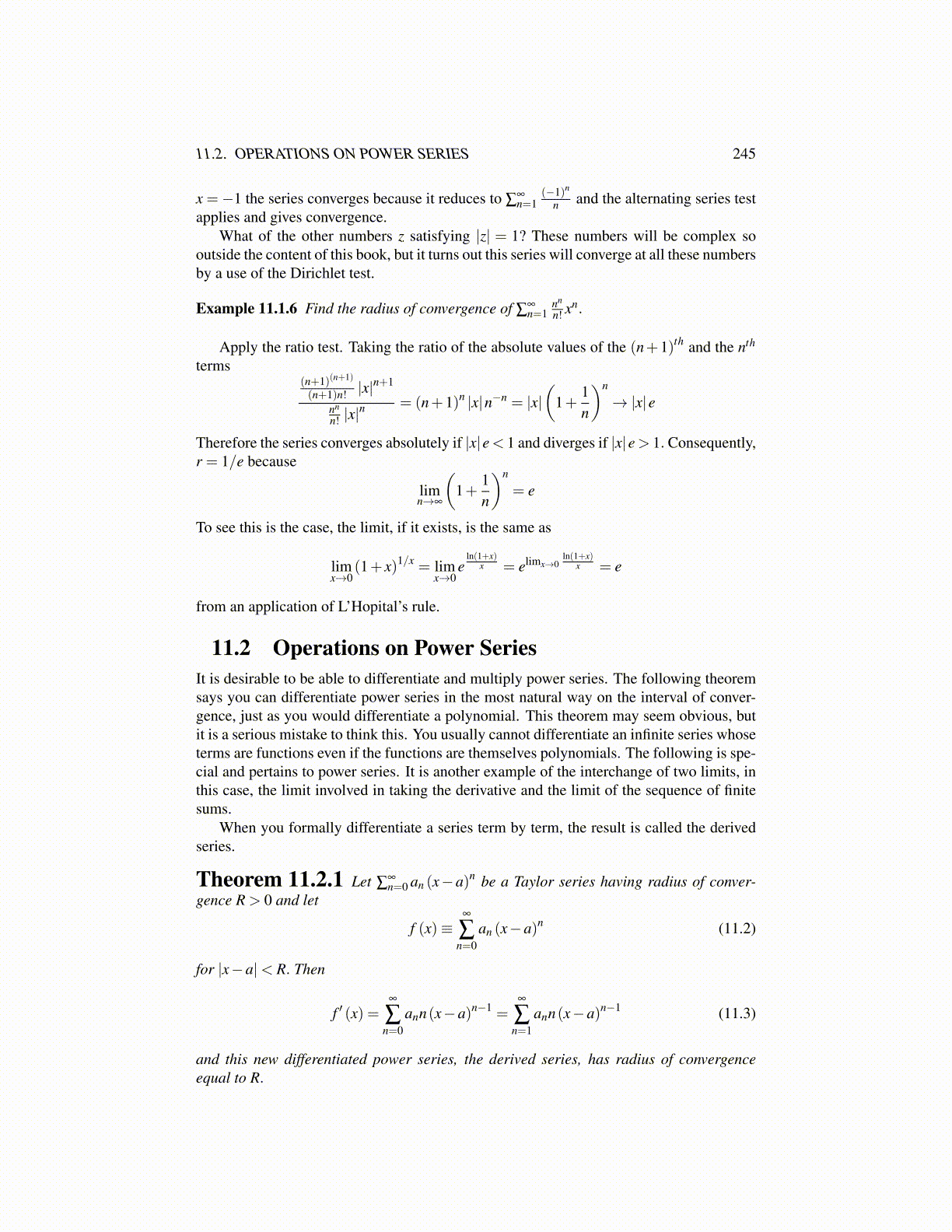
11.2. OPERATIONS ON POWER SERIES 245
x =−1 the series converges because it reduces to ∑∞n=1
(−1)n
n and the alternating series testapplies and gives convergence.
What of the other numbers z satisfying |z| = 1? These numbers will be complex sooutside the content of this book, but it turns out this series will converge at all these numbersby a use of the Dirichlet test.
Example 11.1.6 Find the radius of convergence of ∑∞n=1
nn
n! xn.
Apply the ratio test. Taking the ratio of the absolute values of the (n+1)th and the nth
terms(n+1)(n+1)
(n+1)n! |x|n+1
nn
n! |x|n = (n+1)n |x|n−n = |x|
(1+
1n
)n
→ |x|e
Therefore the series converges absolutely if |x|e< 1 and diverges if |x|e> 1. Consequently,r = 1/e because
limn→∞
(1+
1n
)n
= e
To see this is the case, the limit, if it exists, is the same as
limx→0
(1+ x)1/x = limx→0
eln(1+x)
x = elimx→0ln(1+x)
x = e
from an application of L’Hopital’s rule.
11.2 Operations on Power SeriesIt is desirable to be able to differentiate and multiply power series. The following theoremsays you can differentiate power series in the most natural way on the interval of conver-gence, just as you would differentiate a polynomial. This theorem may seem obvious, butit is a serious mistake to think this. You usually cannot differentiate an infinite series whoseterms are functions even if the functions are themselves polynomials. The following is spe-cial and pertains to power series. It is another example of the interchange of two limits, inthis case, the limit involved in taking the derivative and the limit of the sequence of finitesums.
When you formally differentiate a series term by term, the result is called the derivedseries.
Theorem 11.2.1 Let ∑∞n=0 an (x−a)n be a Taylor series having radius of conver-
gence R > 0 and let
f (x)≡∞
∑n=0
an (x−a)n (11.2)
for |x−a|< R. Then
f ′ (x) =∞
∑n=0
ann(x−a)n−1 =∞
∑n=1
ann(x−a)n−1 (11.3)
and this new differentiated power series, the derived series, has radius of convergenceequal to R.